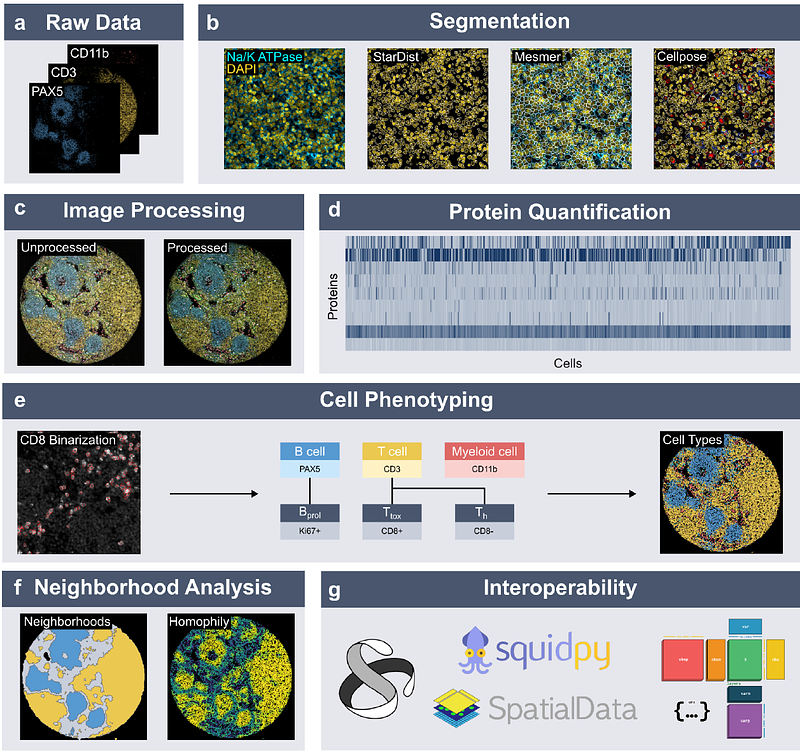Spatialproteomics - an interoperable toolbox for analyzing highly multiplexed fluorescence image data

Spatialproteomics - an interoperable toolbox for analyzing highly multiplexed fluorescence image data
Meyer-Bender, M. F.; Voehringer, H. S.; Schniederjohann, C.; Koziel, S. P.; Chung, E. K.; Popova, E.; Brobeil, A.; Held, L.-M.; Munir, A.; Scverse Community, ; Dietrich, S.; Bruch, P.-M.; Huber, W.
AbstractHighly multiplexed immunofluorescence imaging is a recent method to characterize tissues at single-cell resolution on the protein level, offering low cost, high scalability, and the ability to analyze paraffin-embedded tissue samples. However, the analysis of these data involves a sequence of steps, including segmentation, image processing, marker quantification, cell type classification, and neighborhood analysis, each of which involves a multitude of method and parameter choices that need to be adapted to the data and analytical objective at hand. Moreover, variations in data quality can be high and unpredictable, which necessitates further flexibility and interactivity. While individual components exist, there is an unmet need for a coherent toolbox that offers end-to-end coverage of the workflow, flexibility, and automation. We present spatialproteomics, a Python package that addresses these challenges. Built on top of xarray and dask, spatialproteomics can process images that are larger than the working memory. It supports synchronization of shared coordinates across data modalities such as images, segmentation masks, and expression matrices, which facilitates easy and safe subsetting and transformation. We demonstrate spatialproteomics on a set of images of reactive lymph nodes or different forms of B cell Non-Hodgkin lymphomas (BNHL) from 132 patients. We showcase an end-to-end analysis from raw images to statistical characterization of cell type composition and spatial distribution across indolent and aggressive lymphomas. Furthermore, we show how spatialproteomics can process gigapixel whole slide images. Altogether, we propose spatialproteomics as an easy-to-install, easy-to-learn, comprehensive toolbox for constructing powerful end-to-end image analysis solutions for highly multiplexed immunofluorescence imaging.